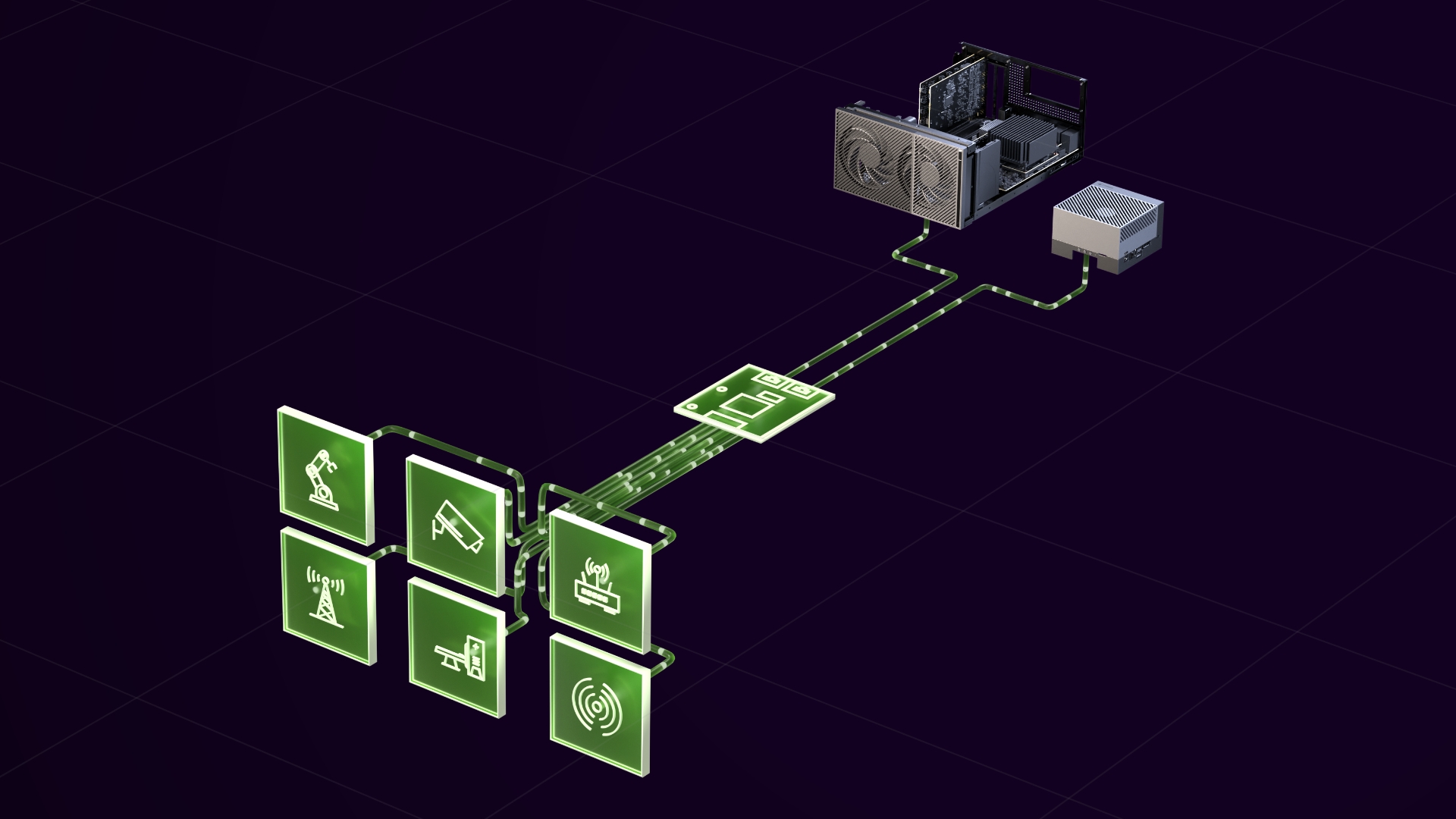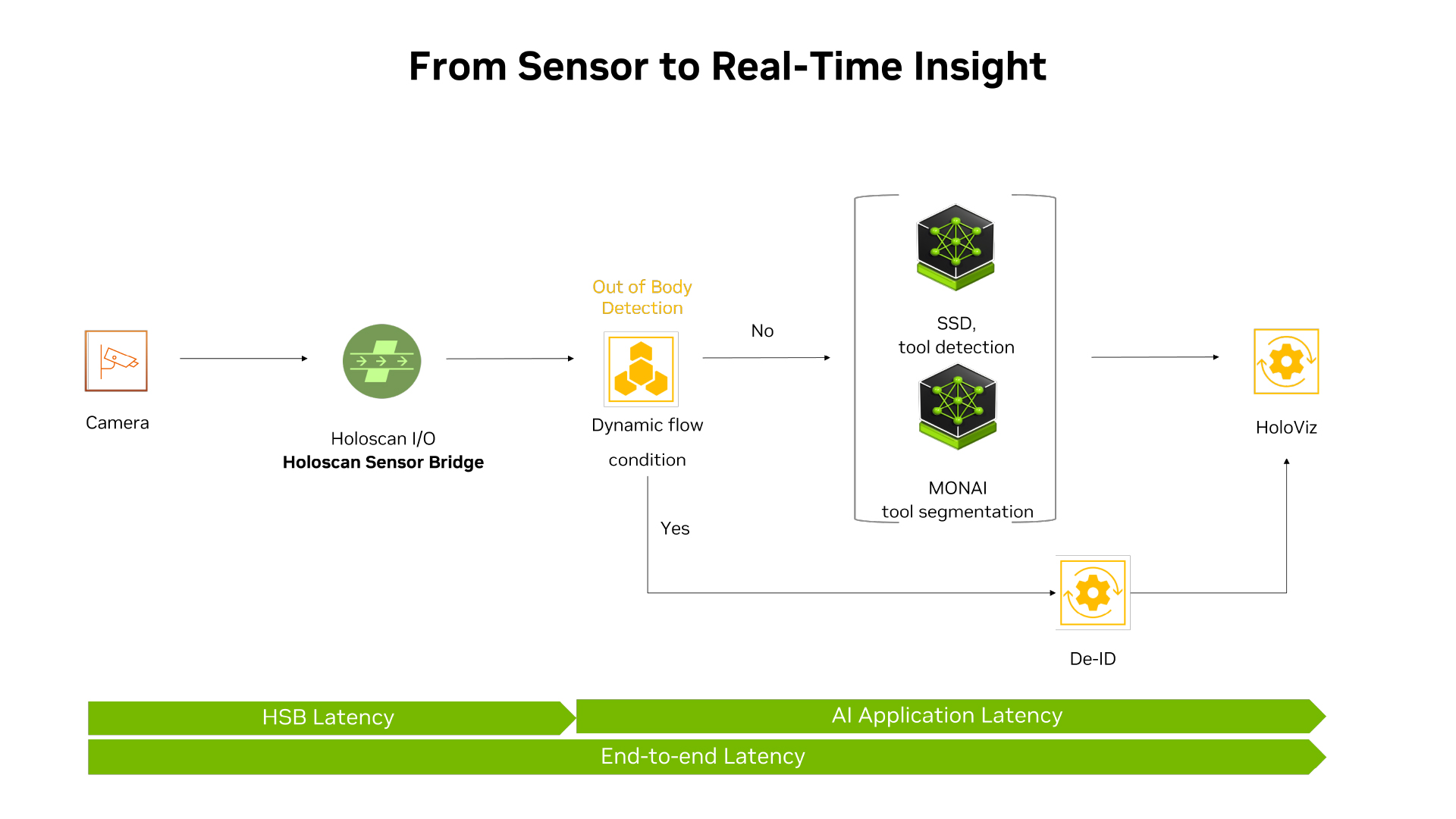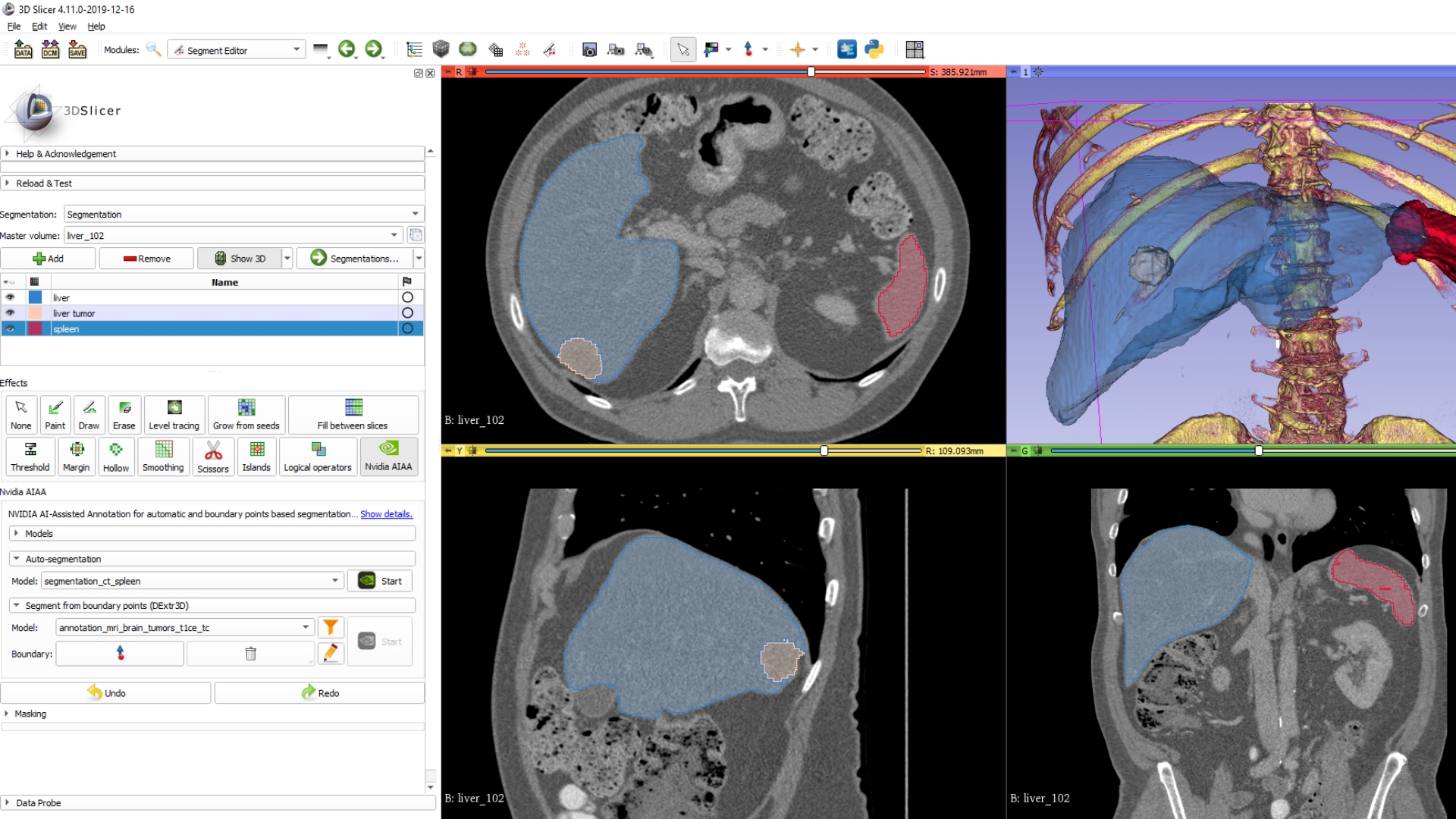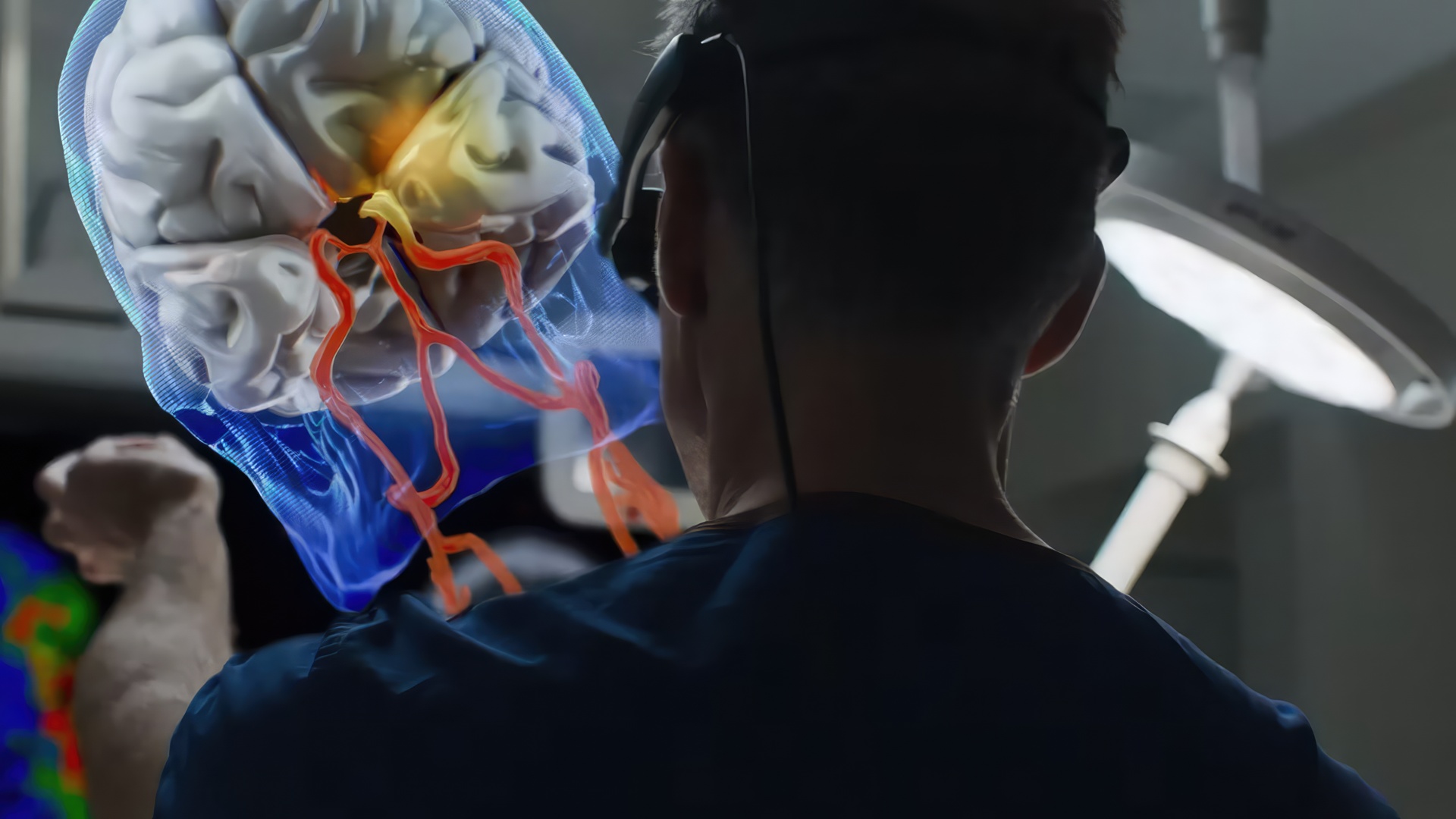NVIDIA Holoscan SDK
NVIDIA Holoscan is a domain-agnostic, multimodal AI sensor processing platform that provides the accelerated, full-stack infrastructure needed for real-time processing of streaming data at the edge or in the cloud.
Download NowDocumentationForum
Download the NVIDIA Holoscan SDK
To compile the open-source Holoscan SDK yourself, download it from GitHub.
GitHub| SDK Documentation | Release Notes
PyPi
Pip Install NVIDIA Holoscan SDK
Ubuntu Package
Download and install the Debian Package
NGC Container
Run within the Holoscan Container
Conda
Now available on Conda
How Holoscan SDK Works
Getting-Started Guide
Install, setup, and start learning how to use the Holoscan SDK with guided examples.
Holoscan GitHub
Learn more about the Holoscan AI sensor processing platform, or compile the open-source Holoscan SDK yourself.
Holoscan Reference Applications
Check out and share reference applications, operators, tutorials, and benchmarks on the HoloHub.
Learn About the Latest Release
Jump into the latest features and improvements for the Holoscan SDK.
Get Started With Holoscan
1. Pick Your Platform
Optimize experiences for edge workloads by running Holoscan on industrial-grade hardware like NVIDIA IGX™. The SDK is also compatible with multiple hardware platforms, including aarch64 and x86.
Learn More2. Install the SDK
Get the specifications you need to run Holoscan locally. Understand the prerequisites and more with this install guide.
Get the Installation Guide3. Explore Examples
Learn how to use the Holoscan SDK to build applications through a series of core examples.
Start Learning
Process Low-Latency Sensor Data Over Ethernet With Holoscan Sensor Bridge
Holoscan Sensor Bridge seamlessly handles high-bandwidth data from diverse sensors over Ethernet, enabling real-time, high-performance AI processing. It serves as a flexible field-programmable gate array (FPGA) interface with a standard API and open software.
Holoscan Reference Applications
Access an open repository of Holoscan reference applications and operators, including prebuilt examples of end-to-end applications and guidance on how to use, customize, and scale them.

Reference Application: End-to-End Surgical Video
NVIDIA Holoscan’s Surgical Video Workflow enables rapid, low-latency processing of surgical video feeds with advanced AI models for tool detection and segmentation. With a modular, customizable pipeline, it’s designed to streamline the development of AI-driven medical imaging solutions.

OpenIGTLink
Real-Time Visualization With 3D Slicer
This reference application enables images to be easily sent from 3D Slicer to Holoscan for running medical AI inference at the edge for guiding surgical planning, medical research, and advanced diagnostics—leveraging the strength of both platforms within a single reference application.

Magic Leap
XR: Volume Rendering
The XR Volume Rendering application combines Holoscan’s real-time AI processing with Magic Leap’s AR display and spatial tracking, showing how XR in medical imaging can help with surgical planning, medical education, and patient consultations.
Holoscan Reference Applications
Once you’ve set up Holoscan and learned the basics, check out prebuilt examples of end-to-end applications and guidance on how to use, customize, and scale them.
Body Pose Estimation
This computer vision task recognizes specific points on the human body in images or videos.
Speech-to-Text and Large Language Models
This application shows how to transcribe audio files with a speech-to-text model (STT) and how to use a large language model (LLM) to summarize and generate new, relevant information.
SAM2: Segment Anything in Images and Videos
This application demonstrates how to run SAM2 models on a live video feed with the possibility of changing query points in real time.
Sensor IO: GPUDirect Data Ingestion
Reference applications for sensor input and output (IO) with Holoscan demonstrate the advanced data-ingestion capabilities of NVIDIA® GPUDirect®. Partners like Yuan and Deltacast provide state-of-the-art IO capture cards that integrate seamlessly with Holoscan, enabling rapid data transfer directly to GPU memory.
DDS-Based Interoperability
The Data Distribution Service (DDS) video application demonstrates how video frames can be written to or read from a DDS databus to provide flexible integration between Holoscan applications and other applications (using Holoscan or not).
Multi-AI AR-Assisted Surgery
This application shows how to enhance robotic surgery by combining 3D anatomical models with real-time AI segmentation to get improved depth perception, better navigation, and enhanced patient safety.
Holoscan Developer Blogs
More Resources
Ethical AI
NVIDIA believes Trustworthy AI is a shared responsibility, and we have established policies and practices to enable development for a wide array of AI applications. When downloading or using a model in accordance with our terms of service, developers should work with their supporting model team to ensure this model meets requirements for the relevant industry and use case and addresses unforeseen product misuse.
Please report security vulnerabilities or NVIDIA AI concerns here.
Get started with Holoscan today.
